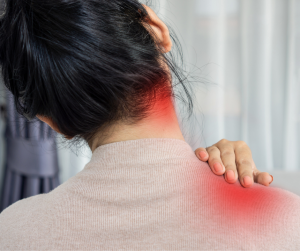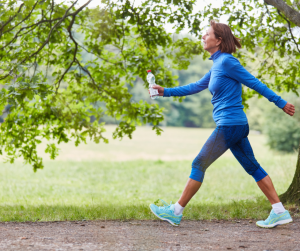We’ve all been there—we press ourselves a little harder at the gym or try that Pilates reformer class at the new studio around the corner and then find ourselves hobbling out of bed the next morning. I know on days like these I’m keenly aware of achy muscles I never noticed before! Is there really a muscle located in that one particular spot between my upper right shoulder and my spine? (In fact, there are more than one—it could be the rhomboids, levator scapulae, or latissimus dorsi screaming at you.)

There were also days during my perimenopausal and menopausal journey when I woke up wondering where that truck that hit me was hiding because I certainly didn’t fall asleep this way. Is it possible this is a normal part of perimenopause and menopause?
The answer to both of the previous questions is YES. As women approach midlife, two things become equally true: 1) as we grow older our muscle fibers become less flexible and lose their density making pain during recovery more common and 2) women approaching menopause will experience more chronic pain such as migraines, back pain, and achy joints due to the imbalance of estrogen. Estrogen affects more than our reproductive system; it is tied to our muscles, bones, brain, and joints. As estrogen embarks on the up-and-down journey that is perimenopause, the unpredictability of estrogen levels can produce changes all over our body.
And this means we experience the ups and downs as well. This is why one day we may feel like we can conquer Mount Kilimanjaro, and the next day we are seriously regretting making that decision to climb it.
It helps to understand both scenarios. As we exercise, we produce tiny tears in our muscles that will become inflamed and repair themselves, creating more muscle. This is a natural part of the muscle-building process.
When the pain reaches Mt. Kilimanjaro territory, we’ve likely pushed ourselves past our limits and need to take a step back. If a day or two after a strenuous workout we feel more pain than usual or feel like we’ve “pulled something,” that means we’re experiencing DOMS or delayed-onset muscular soreness. This doesn’t mean we should stop exercising completely, but rather choose more gentle movement practices like yoga, swimming, or walking to help with recovery. In fact, I’m a big fan of walking every morning.

During perimenopause and menopause, about 40 percent of women report some type of musculoskeletal pain, such as joint pain, back pain, or headaches. A study published in Menopause: The Journal of the North American Menopause Society notes that women in menopause are more likely to experience chronic pain. The changes in estrogen and other hormones during perimenopause and menopause can affect our pain sensitivity. Add in other symptoms such as difficulty sleeping, when much of the muscle repair work is done, and there’s a combination effect that can most certainly create the “hit by a truck” scenario.
So, is the pain caused by our hormones or our workout? The answer: yes and yes. Knowing our bodies are experiencing changes, it’s best to pause and take stock of our week. Note days when you know you’ve put in some extra sweat equity and the days when your sleep has been off and you’re more fatigued than usual.
Give yourself the time to recognize where your body is at today. Being in midlife doesn’t mean you have to stop doing all the things, but it means having the awareness to know how to support your body on any given day. Do I need more sleep or a day away from the gym? Is this my body giving me a nudge to take it down a notch or am I feeling consistent pain that I need to address?
Learning how to be present with discomfort is a valuable tool during perimenopause and menopause. I often encourage clients to understand the difference between “pain” and “discomfort.” To me they are worlds apart. Know your body and recognize when movement may heel and when it may exacerbate. Only you can know when either is right for you.
Know that just because you might need to scale back from your high-intensity exercise routine to do something less strenuous, it doesn’t mean you are lacking in your fitness goals. It also doesn’t mean that you should do NOTHING. You can still move; just give the high intensity a breather for a day or so. Then, presto, you are back on the following day. This means you are being your own best advocate and doing what is right for you at that moment. You get to define what our success looks like for yourself.
So take the opportunity to write that personal trainer appointment on your calendar…in ink! Join that hiking club. Start that couch to 5k journey. Sign up for my new eight week program or Concierge Small Group Fitness. Whatever that nudge is for you, take it. And check in with yourself, often.



